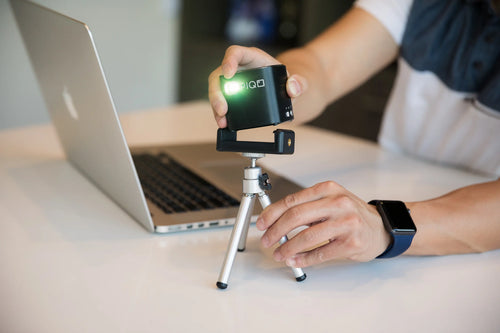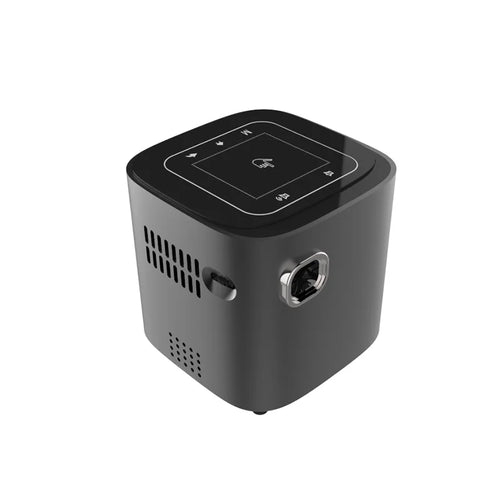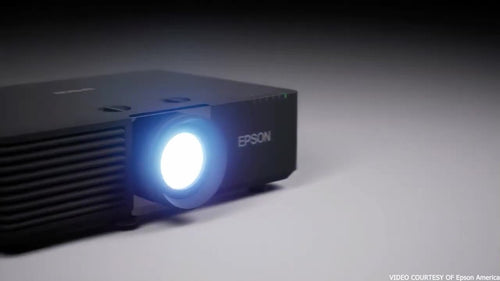Love in Focus: Step-by-Step Guide to Incorporating a Projector into Your Wedding

Weddings are joyful celebrations of love, and couples seek innovative ways to make their special day more memorable. One increasingly popular trend is incorporating a projector into the wedding setup. By seamlessly blending technology and romance, projectors can elevate the ambiance, create personalized experiences, and leave a lasting impression on guests.
This step-by-step guide will explore incorporating a projector into your wedding, ensuring a mesmerizing visual experience. Let’s dive in!
Step-by-Step Guide to Incorporating a Projector into Your Wedding
Let's explore the step-by-step guide to incorporating a projector into your wedding:
1. Determine the Purpose of Using a Projector
Before diving into the technical aspects, defining the purpose of using a projector at your wedding is essential. Do you want to enhance the overall ambiance with a captivating backdrop? Or you could aim to create a personalized experience by showcasing a slideshow or video montage of cherished memories. Understanding your goal will guide you through the subsequent steps and help you make informed decisions.
2. Choosing the Right Projector
Selecting the perfect projector is crucial to achieving the desired visual impact. Consider factors such as venue size, lighting conditions, and budget. Pay attention to lumens (brightness) and resolution, as they significantly affect the quality of the projected images. Opt for a projector with sufficient illumination for the venue and a solution suitable for your content.
3. Selecting the Perfect Projection Surface
The projection surface plays a vital role in the visual experience. Various options include walls, screens, or unconventional surfaces like hanging fabrics or glass panels. When selecting the projection surface, consider the venue's layout, available space, and desired aesthetics. Also, view the ambient light conditions and the surface's reflective properties to ensure optimal image quality.
4. Planning the Content
Crafting engaging and personalized content is essential for successful projector incorporation. Create a slideshow or video montage that showcases special moments, such as the couple's journey, heartwarming memories, and shared experiences.
Be creative and consider incorporating quotes, song lyrics, or anecdotes that reflect your love story. Ensure the content aligns with your wedding theme and resonates with both you and your guests.
5. Arranging the Setup
Proper setup of the projector is crucial for a seamless experience. Determine the ideal placement of the projector, considering factors like distance, angle, and obstructions.
It's advisable to consult with a professional or an experienced AV technician for expert guidance. Connect the projector to a suitable source device and conduct thorough tests to ensure everything functions correctly before the big day.
6. Ensuring Optimal Projection Quality
To achieve optimal projection quality, you need to calibrate the projector settings. Adjust brightness, contrast, and aspect ratio according to the venue's lighting conditions and the content you'll project.
Take into consideration the time of day, as lighting conditions may vary. Additionally, anticipate challenges posed by ambient lighting and make necessary adjustments to enhance the visibility of the projected images.
7. Captivating the Audience
The key to captivating your audience lies in strategic timing and creative transitions. Choose the perfect moments during the wedding to display the projected content. For example, you could showcase the couple's childhood photos during a nostalgic speech or project well-wishes from loved ones during a reception. Implement smooth transitions and subtle effects to create an immersive and visually appealing experience.
8. Sound Integration
Sound integration is vital for an immersive audiovisual experience. Consider synchronized audio to complement the projected content. Connect the projector to a sound system or clear and balanced speakers. Ensure the volume is appropriate for the venue size and sound quality aligns with the visual impact.
9. Rehearsing and Testing
Practice makes perfect, and rehearsing the setup is essential to iron out potential issues. Conduct run-throughs with the projector, content, and sound system to synchronize everything. Anticipate possible challenges and prepare contingency plans. Address technical or logistical concerns beforehand to minimize disruptions during the wedding day.
10. Execution on the Wedding Day
On the much-anticipated wedding day, coordination is vital. Collaborate closely with your wedding planner, photographer, and other vendors to ensure seamless projector integration into the event. Communicate the timing and specific moments you want to highlight with the projection. Consider designating a dedicated technician to oversee the setup and promptly address any unforeseen circumstances.
Top 3 Best Portable Projectors
Here are the top 3 portable projectors:
1. Piqo Wireless Mini Projector
The Piqo Projector is the perfect addition to your special day. This wireless mini projector has impressive features to make your wedding special. Its bright 400-lumens display and 720p HD resolution create stunning visuals for your guests, and its 50-foot range lets you project anywhere. Moreover, its lightweight design makes transporting it to different wedding locations easy, making the Piqo Projector the ideal choice for your big day.
2. ViewSonic M1+ Portable Movie Projector
The ViewSonic M1+ portable movie projector is a versatile portable projector with a built-in battery that provides up to 6 hours of playback. It offers a WVGA resolution (854x480 pixels), built-in Harman Kardon speakers, and multiple connectivity options.
3. Samsung Smart Portable Projector
Samsung Smart Portable Projector features a fast set-up time and allows you to project onto any surface in Full 1080p HD. Its built-in battery will give you 4 hours of uninterrupted viewing time, perfect for showing pictures and videos of the couple. Plus, the Smart Portable Projector is lightweight and easy to carry.
Features to Look for in a Projector
There are a few features you should consider before buying a portable projector. These are as follows:
1. Portability
One of the primary advantages of a portable projector is its portability. When choosing a portable projector, it is crucial to consider its size and weight. A lightweight and compact design makes it easier to carry the projector around and set it up in different locations. Look for small projectors to fit your bag or backpack without compromising performance.
2. Image Quality
To truly enjoy the projected content, image quality is of utmost importance. Here are the key factors to consider:
Resolution
Higher resolution ensures sharp and detailed images. Look for a portable projector with at least 720p HD resolution for a clear viewing experience. If you plan to use the projector for presentations or movies, consider Full HD (1080p) or 4K resolution models for enhanced visual quality.
Brightness
Brightness determines how well the projected image appears in various lighting conditions. Look for a higher lumen rating projector for better performance in brightly lit environments. A higher brightness ensures the image is vibrant and easily visible, even in well-lit rooms or outdoor settings.
Contrast Ratio
The contrast ratio affects the difference between an image's darkest and brightest parts. A higher contrast ratio delivers more accurate colors and improves the overall picture quality. Look for projectors with a higher contrast ratio to enjoy vibrant and lifelike visuals.
3. Connectivity Options
A versatile portable projector should offer multiple connectivity options to ensure compatibility with different devices. Consider the following connectivity options:
HDMI
HDMI ports connect your projector to various devices like laptops, gaming consoles, DVD players, and streaming devices. Ensure that the projector has at least one HDMI port for seamless connections.
USB
USB ports enable easy access to multimedia files directly from USB flash drives or external hard drives. Look for a projector with USB ports for hassle-free playback of videos, images, and documents.
Wireless
Wireless connectivity allows you to connect your projector to smartphones, tablets, or laptops without cables. Look for projectors with built-in Wi-Fi or Bluetooth capabilities for convenient wireless streaming.
4. Keystone Correction
Keystone correction is a feature that allows you to adjust the image shape. The placement of the projector at an angle ensures it appears rectangular. This feature is handy when projecting onto surfaces where the projector isn't perfectly aligned.
5. Throw Distance and Screen Size
Consider the throw distance range of the projector, which refers to the distance between the projector and the projection surface. This range determines the screen size you can achieve. If you plan to use the projector in different spaces, look for a model with a flexible throw distance range to accommodate various setups.
6. Lamp Life
Lamp life refers to the number of hours the projector's lamp can function before needing a replacement. A longer lamp life ensures extended usage without the hassle of frequent replacements. Consider projectors with lamps that offer at least 10,000 hours of life for prolonged use and cost-effectiveness.
7. Built-in Speakers
While external speakers can enhance the audio experience, having built-in speakers in the portable projector can be convenient, especially when you're on the go. Look for projectors with built-in speakers that provide decent audio quality for small to medium-sized rooms.
8. Multimedia Playback
A versatile portable projector should support various multimedia formats for seamless playback. Ensure the projector is compatible with popular video, audio, and image file formats to avoid compatibility issues.
9. User-Friendly Interface
An intuitive and user-friendly interface makes operating the portable projector a breeze. Look for projectors with easy-to-navigate menus, clearly labeled buttons and a remote control for convenient usage.
10. Compatibility with Devices
Ensure the portable projector is compatible with your devices, whether a smartphone, tablet, laptop, or gaming console. Check for compatibility with your devices' operating systems and ports to ensure a seamless connection.
Final Thoughts
Incorporating a projector into your wedding can add a magnetic and immersive element that resonates with you and your guests. By following this step-by-step guide, you can ensure a visually captivating experience that celebrates your love story uniquely and unforgettably. Embrace technology's possibilities and create cherished memories forever etched in your hearts.







